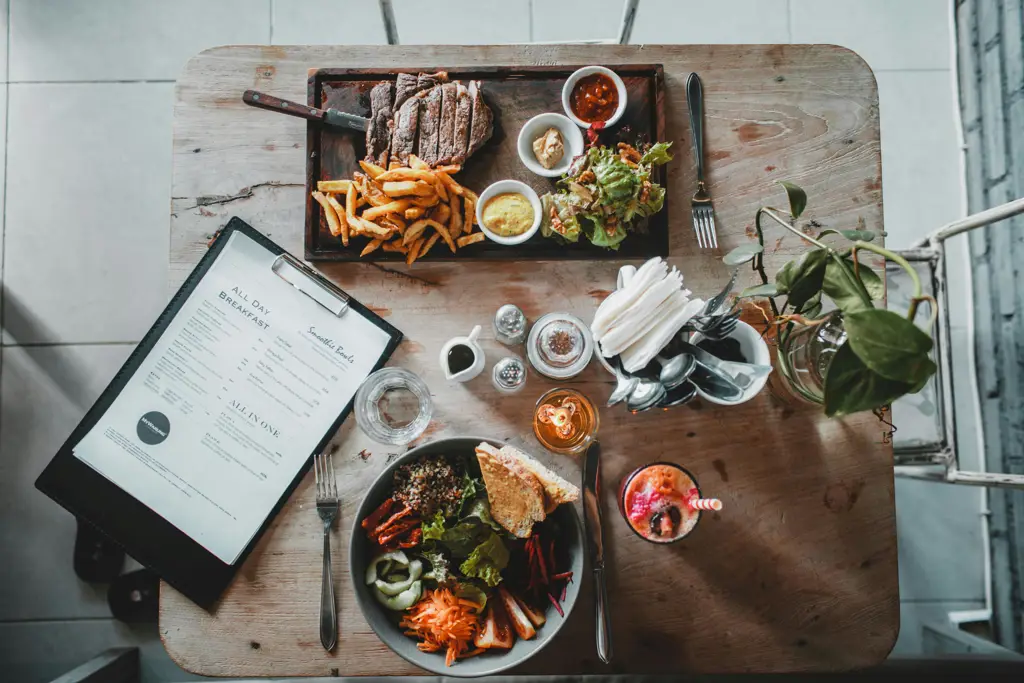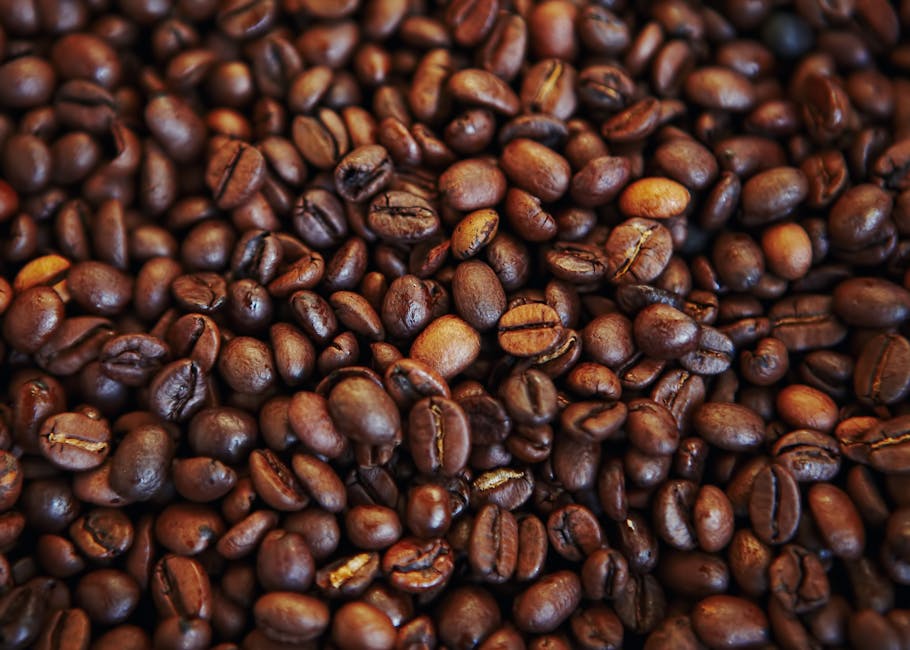The vibrant crimson hues of a roasted beetroot salad instantly evoke images of rustic charm and culinary sophistication. While its precise origins are difficult to pinpoint, the beetroot itself boasts a rich history, dating back millennia. Evidence suggests that beetroot cultivation began in the Mediterranean region as early as the 2nd millennium BC, with ancient Greeks and Romans recognizing its nutritional value and using it both medicinally and as a food source. Its journey across continents is fascinating, with its popularity spreading throughout Europe and eventually to other parts of the world. In some cultures, it holds a significant symbolic meaning; for example, in Eastern European traditions, beetroots are frequently served during special occasions and holidays, representing abundance and good fortune.
Beyond its historical significance, the beetroot has also garnered considerable attention for its impressive nutritional profile. A single medium beetroot contains a significant amount of folate, potassium, and nitrates, contributing to its reputation as a superfood. Studies have shown that dietary nitrates can improve athletic performance and cardiovascular health, making beetroot a popular addition to the diets of athletes and health-conscious individuals alike. In fact, according to a 2018 study published in the Journal of the Academy of Nutrition and Dietetics, regular consumption of beetroot has been linked to a reduction in blood pressure. This remarkable vegetable isn’t just healthy; its earthy sweetness and slightly pungent flavor profile make it a versatile ingredient in a wide variety of dishes, from simple side salads to complex gourmet creations.
This recipe for a roasted beetroot salad showcases the beetroot’s versatility at its finest. Roasting intensifies the beetroot’s natural sweetness and creates a tender, almost caramelized texture, perfectly complementing the fresh, contrasting flavors of other ingredients. The preparation is surprisingly simple, requiring minimal effort to yield a visually stunning and incredibly tasty salad. This dish can be enjoyed as a light lunch, a vibrant side dish to accompany a main course, or even as a sophisticated appetizer. Whether you’re a seasoned cook or a culinary novice, this recipe will allow you to discover the delightful versatility and impressive health benefits of this often-underestimated root vegetable. Prepare to be amazed by the depth of flavor and the beautiful color that this roasted beetroot salad will bring to your table.
Ingredients and Measurements
This Roasted Beetroot Salad recipe yields approximately 4 servings. Accurate measurements are crucial for achieving the perfect balance of flavors and textures. We’ll be using both weight and volume measurements where appropriate, to cater to different kitchen preferences.
Beetroots: You’ll need approximately 1 pound (450g) of beetroots. Choose beetroots that are firm to the touch, with smooth skins and no soft spots. Smaller beetroots tend to cook more evenly than larger ones. If using larger beetroots, consider cutting them in half or quarters before roasting to ensure even cooking. Avoid beetroots that are shriveled or have blemishes.
Olive Oil: 2 tablespoons (30ml) of extra virgin olive oil are needed for roasting the beetroots. Extra virgin olive oil provides a rich flavor and healthy fats. Using a high-quality olive oil is recommended for optimal taste.
Balsamic Glaze: 2 tablespoons (30ml) of high-quality balsamic glaze will add a touch of sweetness and tanginess to the salad. You can find balsamic glaze pre-made at most grocery stores, or you can reduce balsamic vinegar yourself for a more intense flavor. Look for a glaze with a thick consistency and a deep, dark color.
Goat Cheese: 4 ounces (115g) of soft goat cheese, crumbled, adds a creamy, tangy element that complements the earthy beetroots beautifully. You can substitute with feta cheese if preferred, but the creamy texture of goat cheese is ideal for this recipe.
Walnuts: 1/2 cup (60g) of walnuts, roughly chopped, provides a satisfying crunch and adds a nutty flavor. Toasting the walnuts before adding them to the salad enhances their flavor and aroma. You can toast them in a dry pan over medium heat for about 3-5 minutes, or in a preheated oven at 350°F (175°C) for 5-7 minutes, stirring occasionally, until fragrant and lightly browned.
Orange: 1 medium orange, segmented and juiced, contributes a bright citrusy note that cuts through the earthiness of the beetroots. Use a sharp knife to carefully segment the orange, removing as much of the pith (white membrane) as possible. Reserve the juice to dress the salad if desired.
Fresh Herbs: 2 tablespoons (approximately 1/4 cup) of chopped fresh herbs, such as parsley, mint, or chives, add a fresh, vibrant touch and enhance the overall aroma of the salad. Use a combination of herbs for a more complex flavor profile.
Salt and Black Pepper: Season generously with salt and freshly ground black pepper to taste. Start with a small amount and adjust to your preference. The salt helps to enhance the flavors of the beetroots and other ingredients.
Optional additions: Consider adding other ingredients to customize your salad. Some popular additions include crumbled bacon, toasted pumpkin seeds, or a drizzle of honey.
Equipment List
Creating a delicious roasted beetroot salad requires the right tools to ensure even roasting and efficient preparation. This equipment list details everything you’ll need, from the humble baking sheet to specialized tools that can elevate your culinary experience. While some items are essential, others offer convenience and improved results.
Essential Equipment:
1. Baking Sheet (1 large, approximately 18 x 13 inches): A standard baking sheet is crucial for roasting the beetroots. Ensure it’s of good quality and suitable for high heat. Avoid using non-stick baking sheets for roasting beetroots, as the intense heat and sugar content can damage the coating. A rimmed baking sheet is preferable to contain any beetroot juices that might leak during roasting.
2. Parchment Paper (1 large sheet, slightly larger than your baking sheet): Parchment paper prevents the beetroots from sticking to the baking sheet and makes cleanup significantly easier. Using parchment paper is highly recommended, particularly if you are roasting multiple beetroots.
3. Large Mixing Bowls (at least 2, one 5-quart and one 2-quart): You’ll need a large bowl for tossing the roasted beetroots with the dressing and another smaller bowl for preparing the dressing itself. Choose bowls that are sturdy and easy to clean. Stainless steel or glass bowls are excellent choices.
4. Sharp Knife (8-10 inch chef’s knife): A sharp knife is essential for safely and efficiently trimming and chopping the beetroots. A dull knife will make the task more difficult and potentially dangerous. Invest in a high-quality chef’s knife and keep it well-sharpened.
5. Cutting Board (large, sturdy): A large cutting board provides ample space for trimming and chopping the beetroots. Choose a cutting board made of durable material like wood or plastic, and ensure it’s large enough to comfortably work with the beetroots.
6. Measuring Cups and Spoons: Accurate measurement of ingredients is critical for achieving the desired flavor balance in your salad dressing. Use standard measuring cups and spoons to ensure consistency in your recipe.
Recommended Equipment (Optional but Helpful):
1. Vegetable Peeler: While you can trim the beetroot skin with a knife, a vegetable peeler makes the process quicker and easier. A good quality peeler will remove the skin efficiently without wasting too much of the beetroot.
2. Food Processor (optional): If you prefer finely diced beetroot, a food processor can quickly and evenly chop the cooked beetroots. However, hand chopping allows for more control over the size and texture.
3. Salad Spinner (optional): If you’re including leafy greens in your salad, a salad spinner effectively removes excess water, ensuring a crispier salad with better texture and preventing a watery dressing.
4. Serving Bowl (large, attractive): A beautiful serving bowl enhances the presentation of your finished salad. Choose a bowl that complements the colors of the beetroot and other salad ingredients.
Preparation of Beetroots (Washing, Peeling, Chopping)
Before you begin roasting your beetroots, proper preparation is key to achieving the best flavor and texture in your final salad. We’ll cover washing, peeling, and chopping techniques to ensure efficiency and minimize mess.
Start with approximately 1 pound (450g) of beetroots. This quantity is suitable for a salad serving 4-6 people, but you can easily adjust according to your needs. Choose beetroots that are firm to the touch and free from bruises or soft spots. Avoid any that are significantly misshapen or have sprouting tops.
Washing the Beetroots: Thoroughly wash the beetroots under cold running water. Use a vegetable brush to scrub away any clinging soil or debris. Pay close attention to the root ends and any crevices, as these areas often retain the most dirt. Rinse until the beets are completely clean. This step is crucial for removing any potential pesticides or bacteria.
Peeling the Beetroots: There are two primary methods for peeling beetroots: raw or cooked. Peeling raw beets can be more challenging due to their tough skin. While you can achieve this with a vegetable peeler, it’s often more efficient to boil or roast the beets first. Roasting is recommended for this recipe as it intensifies the beetroot’s sweetness. Once roasted (following the roasting instructions in the next section), allow the beets to cool slightly before handling. The skins will then slip off relatively easily using your hands or a paring knife. If using a knife, be careful to avoid cutting into the beetroot flesh.
A helpful tip for easier peeling: After roasting, place the hot beets in a bowl and cover with a damp kitchen towel for 10-15 minutes. The steam will help loosen the skins further, making peeling even simpler.
Chopping the Beetroots: Once peeled, you can chop the beetroots to your desired size and shape. For a roasted beetroot salad, dicing into ½-inch cubes is ideal. This size offers a good balance between visual appeal and ease of eating. However, you can also opt for larger chunks or even thin slices, depending on your preference. Use a sharp knife for clean cuts and to prevent bruising the beetroot.
Important Note on Stain Prevention: Beetroot juice can stain hands and cutting boards intensely. To minimize staining, wear gloves while handling raw or cooked beets. Also, consider using a stainless steel cutting board, as they are less likely to absorb the pigment than wooden boards. If staining does occur, a paste of baking soda and water can help to gently remove the stains from your hands.
With your beetroots now washed, peeled, and chopped, you’re ready to proceed with the roasting process and the assembly of your delicious roasted beetroot salad.
Roasting the Beetroots
Roasting beetroots brings out their natural sweetness and earthiness, creating a depth of flavor unmatched by other cooking methods. This section details the process of roasting beetroots perfectly for your salad, ensuring tender insides and a slightly caramelized exterior.
Start with approximately 1 pound (450g) of beetroots. Choose beetroots that are firm to the touch, without any soft spots or blemishes. The size isn’t critical; you can use a mix of small and large beetroots, just adjust cooking time accordingly. For a vibrant color and sweeter flavor, opt for red beetroots, although golden or chioggia beetroots work well too.
Wash the beetroots thoroughly under cold running water. Use a vegetable brush to remove any clinging soil. Do not peel the beetroots before roasting. The skin protects the beetroots during cooking and prevents them from drying out. However, you can trim off any excessively long taproots or leafy greens. Leaving about an inch of stem attached will help prevent the beetroots from losing moisture during roasting.
Preheat your oven to 400°F (200°C). While the oven heats, prepare your roasting pan. A heavy-bottomed baking sheet or roasting pan works best. Line it with parchment paper for easier cleanup and to prevent sticking. This is particularly helpful if you’re roasting multiple batches. Alternatively, you can lightly coat the pan with olive oil.
Place the washed and trimmed beetroots directly onto the prepared baking sheet. Drizzle them generously with 2 tablespoons of olive oil. Season with 1/2 teaspoon of salt and 1/4 teaspoon of black pepper. Using your hands, gently toss the beetroots to coat them evenly with the oil and seasonings. This ensures consistent roasting and flavor.
Roast the beetroots for 45-60 minutes, or until a fork easily pierces the center. Larger beetroots will require longer cooking times. For smaller beetroots, you might only need 45 minutes. Check for doneness periodically after the 45-minute mark. If the beetroots are still firm, continue roasting in 10-minute intervals. The beetroots are done when they are tender throughout and slightly softened.
Once cooked, remove the baking sheet from the oven and allow the beetroots to cool slightly before handling. The residual heat will continue to cook them, and they’ll be easier to handle once they’ve cooled down a bit. Be careful when handling the hot beetroots; use oven mitts or tongs to prevent burns.
Once cool enough to handle, you can peel the beetroots. The skins should slip off relatively easily after roasting. If you encounter any stubborn skins, use a vegetable peeler or a sharp paring knife to remove them. Now you’re ready to proceed with the next steps of your recipe, whether that’s chopping them for the salad or using them in another recipe.
Preparing the Dressing
The dressing is crucial to a delicious roasted beetroot salad; it balances the earthy sweetness of the beets and adds a vibrant lift. This recipe uses a classic combination of orange juice, balsamic vinegar, and Dijon mustard, but feel free to adapt it to your taste.
We’ll be making a vinaigrette, which is an emulsion of oil and acid. The key to a good vinaigrette is achieving a balance between the oil and the acid, and properly emulsifying the ingredients. Too much oil, and the dressing will be heavy and greasy. Too much acid, and it will be overly tart. This recipe provides a good starting point, but you can always adjust the quantities to your preference once you’ve tasted it.
Begin by gathering your ingredients: 1/4 cup freshly squeezed orange juice (about one large orange), 2 tablespoons good quality balsamic vinegar (aged balsamic adds depth of flavor), 1 tablespoon Dijon mustard (this adds a creamy texture and tang), 1/2 teaspoon honey or maple syrup (optional, for extra sweetness and to balance the acidity), 1/4 teaspoon freshly ground black pepper, and 1/2 cup extra virgin olive oil. Use a good quality olive oil, as its flavor will significantly impact the final taste of the dressing.
The order in which you combine the ingredients is important. Start by whisking together the orange juice, balsamic vinegar, Dijon mustard, honey (if using), and black pepper in a small bowl. This ensures that the acid and mustard are well incorporated before adding the oil. Whisking vigorously at this stage helps to create a smoother emulsion.
Slowly drizzle in the olive oil while whisking continuously. This slow addition is essential for emulsifying the oil and vinegar properly. If you add the oil too quickly, the dressing will separate. Continue whisking until the dressing is smooth and creamy, and the oil is fully incorporated.
Taste the dressing and adjust the seasoning as needed. You may want to add a pinch more salt, pepper, honey, or balsamic vinegar depending on your preferences. Remember, it’s always easier to add more than to take away, so start with a little and adjust gradually. A good dressing should be well-balanced, with a pleasing combination of sweet, tart, and savory notes.
Once you’re happy with the flavor, set the dressing aside until you’re ready to toss it with the roasted beetroot salad. You can store any leftover dressing in an airtight container in the refrigerator for up to 3 days. However, it’s always best to make the dressing fresh for the most vibrant flavor.
Assembling the Salad
With your roasted beetroot ready, it’s time to assemble the vibrant and flavorful salad. This stage allows you to showcase the beautiful color of the beetroot and create a balanced texture and taste profile. We’ll be building this salad in layers to ensure even distribution of flavors and prevent the beetroot from becoming soggy.
Begin by preparing your base. For a salad this size (serving 4-6), I recommend using a large, shallow bowl or a platter. Avoid using a deep bowl, as this can lead to the bottom layers becoming overly saturated with dressing. A shallow bowl allows for better air circulation and prevents wilting.
Next, add your chosen greens. I suggest using a mix of baby spinach (2 cups), peppery arugula (1 cup), and some tender butter lettuce leaves (2 cups) for a delightful contrast in textures and tastes. Gently toss the greens together to combine them evenly. Don’t over-toss, as this can bruise the leaves and make them wilt prematurely. Arrange them loosely in the prepared bowl, creating an even base layer.
Now, it’s time for the star of the show – the roasted beetroot. Peel and slice the cooled beetroot into roughly ½-inch thick slices. Avoid slicing them too thinly, as they may become fragile. If you prefer, you can also dice the beetroot into approximately ½-inch cubes for a different texture. Arrange the beetroot slices or cubes artfully over the greens. Consider overlapping them slightly for a visually appealing presentation. Aim for an even distribution across the salad bowl.
Next, add your chosen additions. This could include crumbled goat cheese (4 ounces), toasted walnuts or pecans (½ cup, roughly chopped), or thinly sliced red onion (¼ cup). Consider the flavors and textures when choosing your additions to complement the sweetness of the beetroot. Gently scatter the chosen ingredients over the beetroot, ensuring that they are evenly distributed.
Finally, prepare the dressing. A simple vinaigrette works best with this salad. Whisk together 2 tablespoons of extra virgin olive oil, 1 tablespoon of balsamic vinegar, 1 teaspoon of Dijon mustard, ½ teaspoon of honey, and a pinch of salt and freshly ground black pepper. Adjust the quantities to your preference. Drizzle the dressing evenly over the salad just before serving. Avoid adding the dressing too early, as it may wilt the greens.
For optimal flavor, allow the salad to sit for 5-10 minutes before serving to allow the flavors to meld. This allows the dressing to coat the ingredients and the flavors to develop. Garnish with fresh herbs like chives or parsley (1 tablespoon, chopped) before serving for an added touch of freshness and visual appeal. Serve immediately and enjoy your delicious roasted beetroot salad!
Recommendations for Your Roasted Beetroot Salad
To elevate your roasted beetroot salad experience, consider these recommendations for preparation, serving, and storage. Proper roasting techniques are key to achieving tender, flavorful beets. Ensure your beets are thoroughly cleaned before roasting, and consider trimming the greens leaving about an inch of stem attached to help retain moisture during the cooking process. Roasting time will vary depending on the size of the beets, so check for doneness by piercing with a fork; they should be easily pierced but still hold their shape.
For the best flavor, allow the roasted beets to cool slightly before handling. This allows them to firm up, making them easier to peel and slice. Don’t rush the cooling process! The residual heat will continue to gently cook the beets, potentially leading to mushiness if you peel and handle them too soon. When peeling, use a sharp knife or a vegetable peeler; gloves are recommended as beetroot can stain your hands.
Serving Suggestions: This vibrant salad is incredibly versatile. Consider adding crumbled feta cheese, toasted walnuts or pecans, and fresh herbs like dill or mint for a sophisticated touch. A light vinaigrette, incorporating ingredients such as balsamic vinegar, olive oil, and a touch of Dijon mustard, beautifully complements the earthy sweetness of the beets. You can also add goat cheese, orange segments, or pomegranate seeds for a burst of contrasting flavors and textures. For a heartier salad, include roasted chickpeas, quinoa, or farro.
Storage: Leftover roasted beetroot salad can be stored in an airtight container in the refrigerator for up to 3-4 days. However, the quality of the salad might diminish slightly over time as the beets may release some moisture. It’s best to consume the salad within the first two days for optimal freshness and flavor. To prevent the salad from becoming soggy, dress it just before serving. If you are storing it for later, dress only a small portion of the salad at a time.
Complementary Dishes: This salad acts as a wonderful side dish to a variety of main courses. It pairs exceptionally well with grilled proteins such as chicken, fish, or lamb. Its earthy sweetness also complements richer dishes like roasted pork tenderloin or hearty stews. Consider serving it alongside grilled halloumi cheese for a Mediterranean-inspired meal, or with a simple grain bowl for a complete and balanced lunch or dinner.
Nutritional Information (per serving, approximate): The nutritional content of your beetroot salad will vary depending on the specific ingredients and quantities used. However, a typical serving (approximately 1 cup) of roasted beetroot salad, including beets, vinaigrette, and some nuts or cheese, will contain roughly 150-200 calories. It’s a good source of fiber, vitamins (A, C, and folate), and minerals (potassium and manganese). Beets are also known for their potential health benefits, including improved blood flow and reduced inflammation.
Important Note: These are approximate values. For precise nutritional information, use a nutrition calculator and input the exact ingredients and their quantities used in your recipe.





